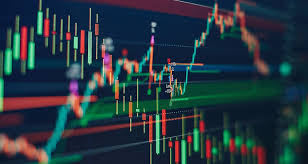
Algo Trading in Crypto: A Comprehensive Overview
In recent years, the financial world has witnessed an unprecedented rise in algorithmic trading, especially within the cryptocurrency markets. As digital currencies gain popularity, traders are increasingly turning to algorithms to enhance their trading strategies and capitalize on the volatility often associated with cryptocurrencies. To truly understand how algo trading is shaping the crypto landscape, algo trading in crypto click here to delve deeper into the inner workings and implications of this innovative trading approach.
What is Algo Trading?
Algorithmic trading (algo trading) refers to the use of computer algorithms to execute a trade automatically based on predefined criteria. These algorithms can analyze market data and execute orders at speeds and frequencies that are impossible for humans to match. This capability is particularly beneficial in high-volatility environments like the crypto market, where prices can change in seconds.
The Advantages of Algo Trading in Crypto
One of the most significant advantages of algo trading in cryptocurrencies is its ability to eliminate emotions from trading decisions. Human traders are often influenced by fear and greed, leading to impulsive decisions that can result in losses. Algorithms, on the other hand, operate on logic and set parameters. Here are several key benefits of using algo trading in the crypto space:
- Speed: Algorithms can process vast amounts of data and execute trades within milliseconds, allowing traders to take advantage of fleeting opportunities.
- Backtesting: Traders can test their strategies against historical data to see how they would have performed in various market conditions.
- Consistency: Algorithms follow specific strategies without deviations, leading to more consistent results over time.
- Diversification: Algo trading allows traders to manage multiple accounts or strategies simultaneously, increasing their exposure across various cryptocurrencies.
Common Strategies in Algo Trading
There are several popular strategies employed by traders utilizing algo trading in the crypto market. Each strategy may vary based on the trader’s risk appetite and market conditions:
1. Market-Making
Market-making algorithms place buy and sell orders simultaneously to profit from the spread between the two. This strategy can provide liquidity to the market, which is critical in the often-illiquid cryptocurrency space.
2. Arbitrage

Arbitrage trading involves taking advantage of price differences between exchanges. For instance, if Bitcoin is priced lower on one exchange than on another, an algorithm can buy on the cheaper exchange and sell on the more expensive one, pocketing the difference.
3. Trend Following
Trend-following algorithms analyze historical price data to identify and follow prevailing market trends. These algorithms may buy when a cryptocurrency is trending upward and sell when it turns downward.
4. Sentiment Analysis
Some algorithms use sentiment analysis to gauge public perception of a cryptocurrency by analyzing news articles, social media posts, and other online content. This analysis helps to predict price movements based on public sentiment.
Challenges of Algo Trading in Crypto
While algo trading has its advantages, it also comes with its share of challenges. Understanding these obstacles is crucial for traders looking to enhance their strategies in the cryptocurrency space.
- Market Volatility: The crypto market is notoriously volatile, which can lead to excessive risk if algorithms are not correctly calibrated.
- Technical Issues: Algorithmic trading relies heavily on technology, and any technical malfunction can lead to significant losses.
- Market Manipulation: The crypto market is less regulated than traditional financial markets, making it susceptible to manipulation that can catch algo traders off guard.
- Data Quality: Algorithms are only as good as the data they are fed. Poor quality or delayed data can result in erroneous trading decisions.
The Future of Algo Trading in Crypto
As the cryptocurrency market continues to mature, the role of algo trading is expected to grow. With advancements in artificial intelligence and machine learning, traders will have access to even more sophisticated tools that can analyze vast amounts of data and execute trades with increased precision. Regulatory developments may also lead to improvements in market transparency, reducing risks associated with manipulation and increasing the confidence of algo traders.
Conclusion
Algorithmic trading in cryptocurrency presents a promising avenue for traders looking to capitalize on the dynamic nature of the market. With its potential to enhance trading efficiency and reduce emotional decision-making, algo trading is likely to play a pivotal role in the future of crypto investing. However, traders must remain vigilant, understanding both the advantages and the challenges that come with this approach. By continually refining their strategies and adapting to market conditions, traders can leverage the power of algo trading to thrive in the exciting world of cryptocurrency.
